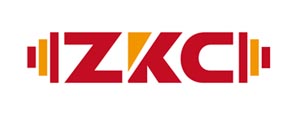2024-2032 IWF Strategic Plan, Pillar 2: Enhancing the IWF events
When you think of an international sports federation, the first idea coming to your mind is perhaps that this organisation is responsible for the staging of major events around the world in the sport it governs. While this may be a limited view of reality, it certainly corresponds to an important part of an IF work. The IWF is no exception to this rule – with quite a dense calendar, our International Federation is running three World Championships (youth, junior, and senior) on a yearly basis, plus a number of other relevant events such as the World Cup or Grand Prix competitions.
These events are the showcase of the IWF activity and a privileged occasion to enhance the exposure of our Stars. That is why, after Pillar 1 of the 2024-2032 IWF Strategic Plan was devoted to Athletes, the second foundation relates to “Enhancing the IWF Events”.
It focuses on many aspects surrounding the staging of IWF competitions, from the very beginning of the process until its conclusion: it has six sub-pillars related to Calendar Programming, Bidding and Hosting follow-up, Event Organisation, Innovative Events, Sports Presentation, and ITO procedures. Each of them lists a series of actions and strategies aimed at improving each of these topics in the years to come.
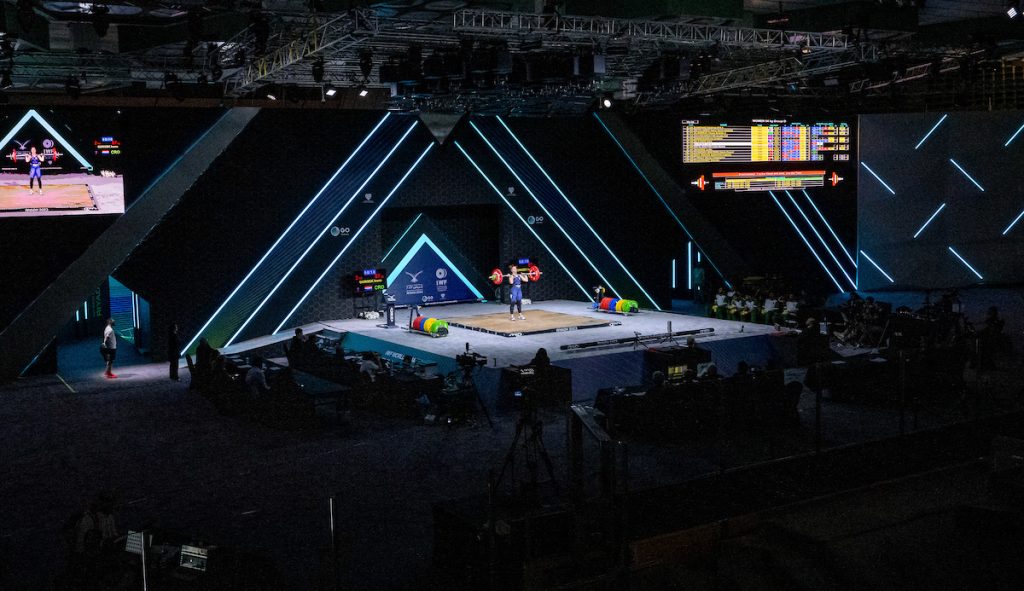
On the Calendar side, special attention should be given to setting fixed “slots” for each of the main events, avoiding at the same time the “clash” with other world, continental or regional competitions. For marketing and TV purposes, having this “continuity” in time allows for more interest and additional commercial opportunities.
Another major issue is the bidding process, which needs to be more diligent and more accompanied by the IWF during its preparation and delivery. The introduction of the athletes’ feedback in this procedure is a major step forward in ensuring that future hosts are of quality and will stage a top-level event in accordance with the IWF’s best expectations. A Bidding Code of Ethics is to be implemented, ensuring full transparency throughout the process. Moreover, mechanisms to do a proper follow-up of the event are to be developed.
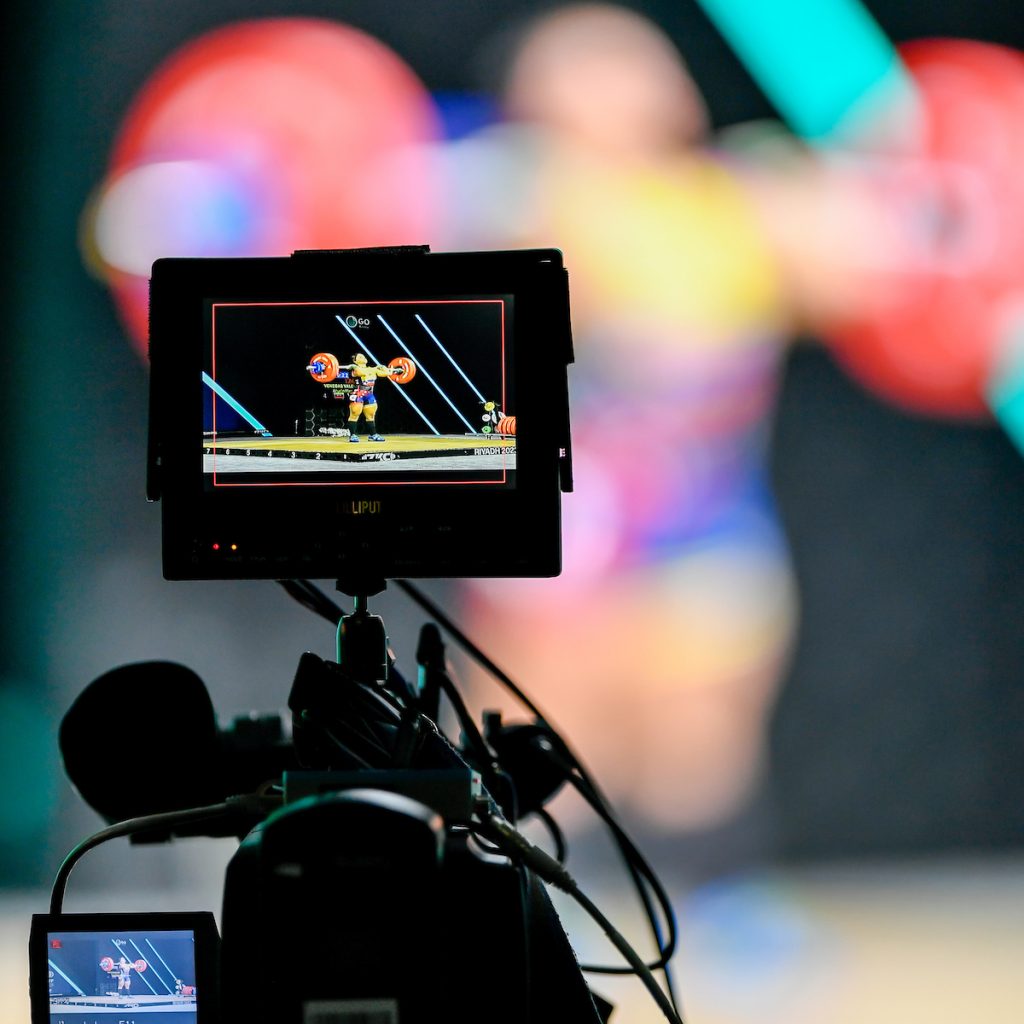
On the organisation side, the establishment of a detailed “Practices and Procedures” document, setting standard conditions to be fulfilled by each of the hosts must be put into practice. A close monitoring of its implementation has to be consolidated, and post-event reports must be produced to evaluate the adequation of the bid with the effective competition that was delivered.
Still on the practical side of an IWF competition, the Sports Presentation must be reviewed: a better and more attractive introduction of the athletes is necessary; a more efficient use of the scoreboard and the ledwall is also fundamental; the look & feel of the venue has to be carefully planned; and the presence of spectators has to be always stimulated.
“We definitively need to enhance the presentation of our events. We need to be innovative and inventive – there are plenty of things to be done. The discussion, for example, on the multi-platform event is a very interesting one: this has definitively potential to become a big attraction. Our sport has many breaks, so having multiple platforms will avoid those ‘dead’ moments, for both the spectators on site, but also for the TV viewers,” considers Stian Grimseth, President of the Norwegian Weightlifting Federation and host of the 2025 IWF World Championships, to be held in Forde, a small town of 13’000 inhabitants in the southwest of the country. It will most probably be the smallest-ever city staging an IWF World Championships! “We could even imagine a 10 or eight-platform solution, where the athletes would successively lift until they fail twice in the same weight. The last valid result would then be counted,” he proposes.
The Norwegian official suggests more practical innovations: “We could divide the competition and warm-up area in a different way so that spectators could see both areas at the same time. What is happening in the warm-up zone is as interesting as what is occurring in the field of play. Another good idea is to have a speaker commenting on what is happening in the warm-up area and informing on the coaches’ strategy concerning the change of weight for their lifters. We need to create some ‘drama’ around the competition!”
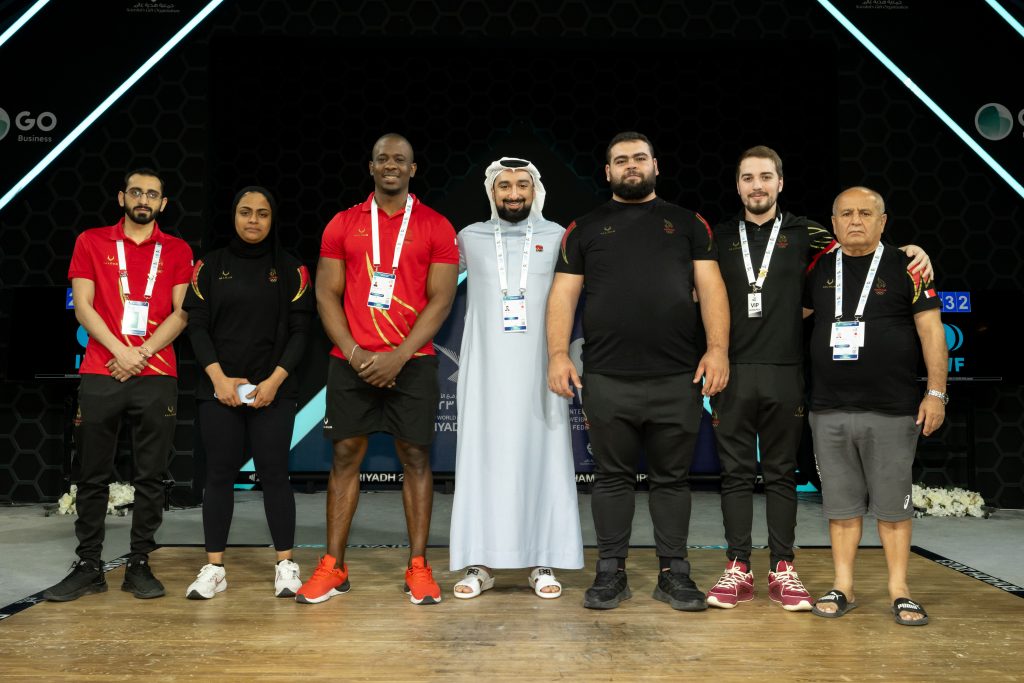 Mr Eshaq Ebrahim Eshaq (in the middle) leading Bahrain’s team
Mr Eshaq Ebrahim Eshaq (in the middle) leading Bahrain’s team
Before Norway, the IWF showcase will stop in 2024 in Manama, the capital of Bahrain. Eshaq Ebrahim Eshaq is the President of the national federation and naturally leads the organising team getting ready for next year’s major rendezvous: “The event and the field of play is our product. It’s critical to improve both. As stakeholders of the IWF, we want to present this product in the best possible way. At the moment, I don’t think it’s at the level it deserves… We are a kind of sleeping giant – we need to project it in a proper way so that the world can realise and understand our full potential,” he says.
The 2023 IWF World Championships in Riyadh were already highlighted by some innovation in terms of athletes’ presentation, both on the scoreboard and in the TV graphics. “This was a very good initiative, but it is only the first step. We must build on this and improve. In Manama, my intention is to definitively raise the level of TV production – have more cameras, more slow-motion, more angles… Even if the venue’s look is great, what stays is what is shown on the camera. TV production is therefore essential for us,” Mr Eshaq continues.
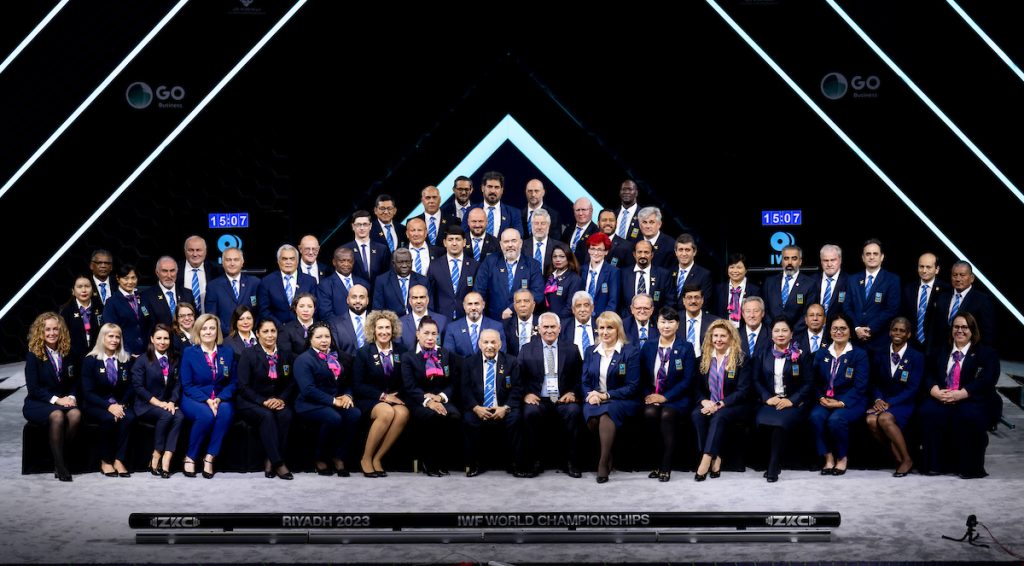
Concerning the international technical officials (ITO), in order to guarantee the fairness of the competition, educational programmes should be created and reinforced, evaluation tools are to be established, and younger officials should be used (especially at the youth and junior World Championships). Technology and Video Playback tools are to be reinforced to facilitate the refereeing.
Finally, and looking into the larger picture, the Strategic Plan is also proposing the development of new formats and models in weightlifting. This is aimed at widening the sports portfolio with different disciplines, such as mixed or teams events, or even taking the sport outside of its traditional venues. The recent initiatives concerning urban weightlifting are having a lot of success around the world: in Lausanne (SUI), La Habana (CUB), Maribor (SLO), or at the upcoming EWF Cup in Ancient Olympia (GRE) at the end of September, the idea is to bring weightlifting to the streets and closer to the general public and its fans. “This kind of initiative is fantastic. It reveals other aspects of our sport and it makes it more attractive for the youth – just remember what happened with the 3×3 basketball ‘revolution’. Every step to make weightlifting more accessible is a winning step to make our sport more popular in the five continents,” Mr Eshaq concludes.
For four weeks, every Friday, we will analyse each of the four pillars of the 2024-2032 IWF Strategic Plan. After the first one on “Safeguarding the IWF stars”, we are focusing today on Pillar 2 (Enhancing the IWF events). The remaining two are Pillar 3 (Keeping the IWF safe), and Pillar 4 (Reaching beyond the IWF).
By IWF Communications
Photos by Giorgio Scala/Deepbluemedia









